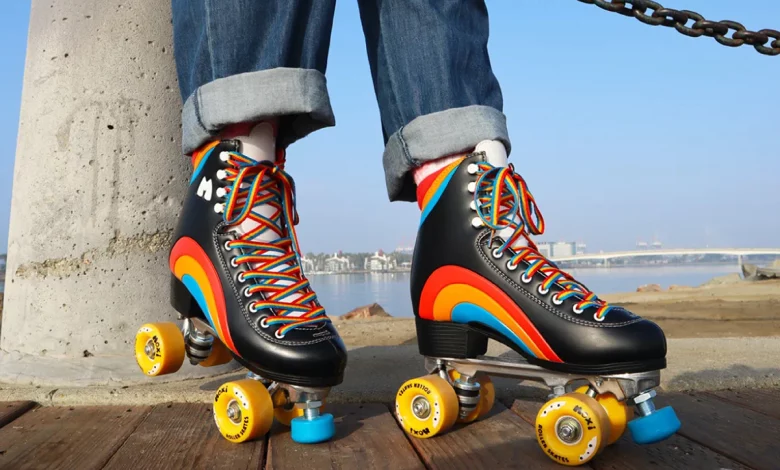Rolling the Distance: Exploring How Long Do Skateboard Wheels Last

Skateboarding is a dynamic and exhilarating sport, and at the heart of every smooth ride are the skateboard wheels. As crucial components of your skateboard setup, the longevity of skateboard wheels is a common question among riders. In this comprehensive guide, we’ll delve into the factors influencing the lifespan of skateboard wheels and answer the burning question: how long do skateboard wheels last? For more interesting insights into the world of skating, visit Skatesblog. Explore a variety of articles, reviews, and recommendations that cater to skaters of all levels.
Understanding the Anatomy of Skateboard Wheels
Before we explore the lifespan of skateboard wheels, let’s unravel the composition and role of these essential components:
1. Material Matters:
Skateboard wheels are typically made from polyurethane, a durable and resilient material. The hardness of the wheels is measured on the durometer scale, with higher numbers indicating harder wheels. Softer wheels provide more grip, while harder wheels offer a smoother ride and greater durability.
2. Size and Shape:
Skateboard wheels come in various sizes and shapes, catering to different styles of riding. Smaller wheels are often preferred for technical tricks, while larger wheels are suitable for cruising and downhill riding. The shape of the wheels, including the width and contact patch, influences their performance and durability.
3. Wheel Profile:
The profile of skateboard wheels refers to the cross-sectional shape. Common profiles include square-edged (or straight-cut) and rounded. Each profile affects the way the wheels interact with surfaces and influences factors like grip and slide.
Factors Influencing the Lifespan of Skateboard Wheels
1. Skating Surface:
The type of surface you skate on plays a significant role in determining how long your skateboard wheels will last. Rough surfaces, such as asphalt and concrete with debris, can accelerate wear and tear. Smooth surfaces, like indoor skate parks or well-maintained pavement, are gentler on wheels and contribute to a longer lifespan.
2. Skating Style:
Your skating style influences the wear pattern on your wheels. Aggressive street skating, where wheels experience constant abrasion against rough surfaces and perform tricks, may lead to faster wear. Conversely, cruising or commuting puts less stress on the wheels, prolonging their life.
3. Frequency of Use:
How often you skate also affects the lifespan of your wheels. Frequent skating, especially intense sessions or daily commuting, will naturally wear down wheels faster. Occasional or recreational skating may result in slower wear and a longer lifespan for the wheels.
4. Proper Maintenance:
Regular maintenance can extend the life of your skateboard wheels. Keeping them clean, rotating them periodically to ensure even wear, and checking for signs of damage or flat spots contribute to their longevity. Properly maintained wheels provide a smoother ride and better performance.
Signs It’s Time to Replace Your Skateboard Wheels
While there isn’t a specific timeframe that universally dictates when to replace skateboard wheels, certain signs indicate that it might be time for a change:
- Uneven Wear:
- Check for uneven wear patterns on the wheels. If one side is significantly more worn than the other, it’s a sign that replacement is imminent.
- Flatspots:
- Flatspots occur when a part of the wheel becomes flat due to prolonged sliding or excessive braking. Flatspots can compromise the performance and stability of the wheels.
- Decreased Performance:
- If you notice a decline in the smoothness of your ride, reduced grip, or difficulty executing tricks, it could be an indication that your wheels have reached the end of their effective life.
- Visible Damage:
- Cracks, chunks missing, or other visible damage to the wheels compromise their structural integrity. If you spot such damage, it’s advisable to replace the wheels promptly.
Maximizing the Lifespan of Your Skateboard Wheels
1. Choose the Right Wheels:
Select skateboard wheels based on your preferred style of riding and the type of terrain you’ll be skating on. Consider factors such as durometer, size, and profile to ensure a good match for your skating needs.
2. Rotate Your Wheels:
Regularly rotate your wheels to promote even wear. This practice helps distribute the impact and friction across all wheels, preventing premature wear on one side.
3. Avoid Excessive Sliding:
While sliding is a thrilling aspect of skateboarding, excessive sliding can accelerate wear on your wheels, leading to flatspots. Practice sliding techniques judiciously to preserve the longevity of your wheels.
4. Skate in Varied Environments:
If possible, vary your skating environments. Avoid sticking exclusively to one type of surface. Skating in different environments can contribute to more even wear on your wheels.
Conclusion: Rolling Into the Future
In the dynamic world of skateboarding, understanding how long skateboard wheels last is essential for maintaining peak performance and ensuring a smooth ride. While various factors influence the lifespan of wheels, riders can take proactive steps to maximize durability. By choosing the right wheels, practicing proper maintenance, and being mindful of skating techniques, you can extend the life of your skateboard wheels and continue rolling into the future.









